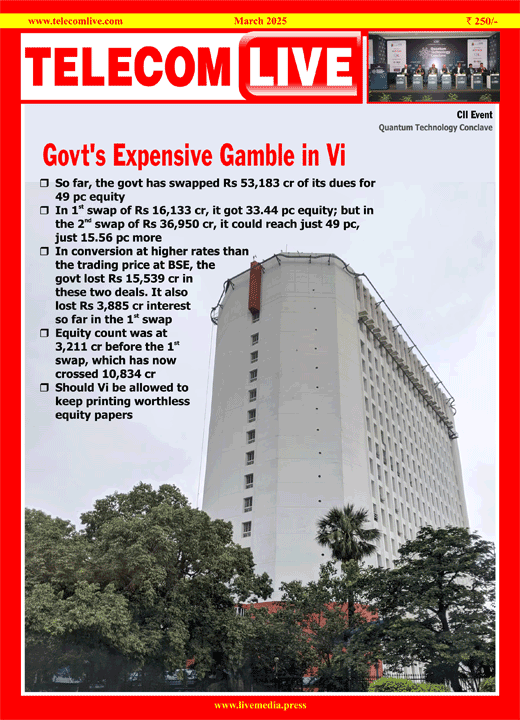Vodafone Idea, Airtel may resort to indirect tariff hikes
Vodafone Idea and Bharti Airtel are likely to resort to indirect methods to raise effective tariffs – without touching headline rates — and boost average revenue per user (ARPU) amid market leader Reliance Jio’s continued pricing aggression, say industry executives and analysts.
These indirect methods, they said, could involve making the plan value of all prepaid packs, pre-tax, which would require a prepaid mobile user to pay the tax in addition to the plan MRP value. Such a move would automatically hike effective tariffs sharply, they added.
At present, all prepaid mobile plans have a composite value, inclusive of taxes.
Senior industry executives said other indirect methods could include a reduced validity period of postpaid plans or even cutting down on data and voice allowances on existing prepaid plans without changing the pack value. Cutting down on allowances, they added, would drive customer migrations to higher-value plans or even to booster packs once their allowances expire, both of which would be tariff accretive for incumbent operators.
PhillipCapital expects Vi and Airtel to use indirect strategies such as “maintaining their current prepaid plans at the same price, but making them pre-tax, which would translate into an effective tariff hike of 18%”. Another likely strategy that these incumbents could use, it said, is “lowering the validity period of some postpaid plans to 24 days from the current 28 days,” which could also result in a 16% effective tariff hike without upsetting customers much.
Some analysts, though, warn that forcing price-conscious prepaid users – who make up around 95% of mobile users — to pay taxes separately over and above a plan MRP, could prove unpopular and lead to churn, given that Jio’s tariffs are already at a 10-15% discount to the two incumbent carriers.
Making the plan value of a prepaid pack, pre-tax would be akin to a tariff hike but could create unnecessary confusion amongst consumers,” said Kunal Vora, senior telecom analyst at BNP Paribas.
Nitin Soni, senior director at global ratings agency, Fitch, backed the view, saying such a move “would be an unfair and non-transparent way to indirectly ring in a headline tariff hike, and might prove tough to implement as there is no global precedence, and incumbents, particularly Vi, could risk further customer losses.
Vora added that keeping a simple tariff structure might be a better option as none of the operators may want to increase price premium further compared to competition.
To be sure, while Airtel has maintained that industry average revenue per user (ARPU) needs to rise to Rs 200 in the near-term, it has repeatedly said it won’t take the lead in raising tariffs but would definitely follow if either Vi or Jio raises rates. This, since a tariff hike would further increase its premium over Jio to more than the current 10-15% level, opening the Sunil Mittal-led telco to the risk of potential subscriber losses.
PhillipCapital, though, said loss-making Vi does not have that choice, and a tariff hike is the only way it can survive, especially if it’s to enhance cash flows and reduce debt. “Vi will have to take the lead in tariff hikes, be it via direct or indirect methods, and hope Bharti and Jio follow suit.”
Vi, on its part, is reckoned to have deferred its immediate tariff hike plans till the June quarter after Jio recently dropped its VoLTE feature phone usage costs by 25%.
After reporting an ARPU of Rs 121 – lower than Airtel’s Rs 166 and Jio’s Rs 151 – in the December quarter, Vi was slated to raise tariffs by the March-end. But that plan is said to have been shelved after Jio last month launched offers on its 4G feature phone – JioPhone – seemingly to target the country’s remaining 300 million feature phone users.
At press time, Vi and Airtel did not reply to ET’s queries.



